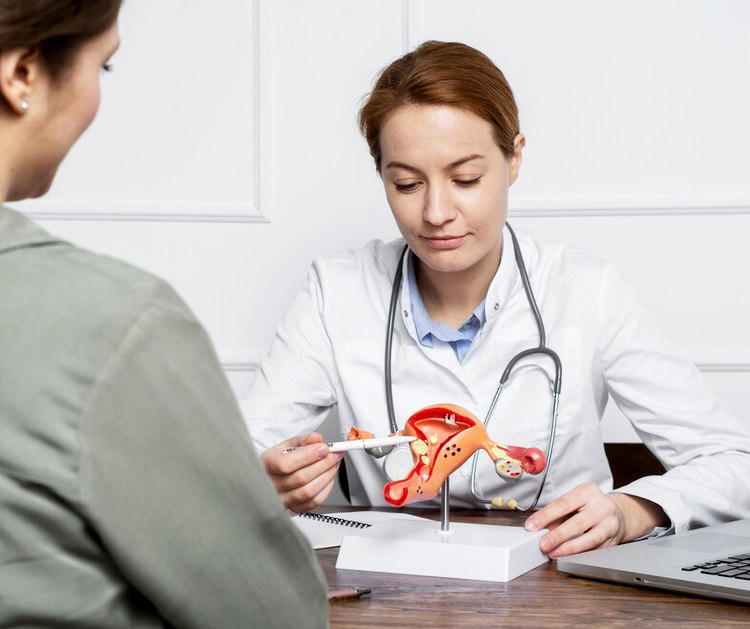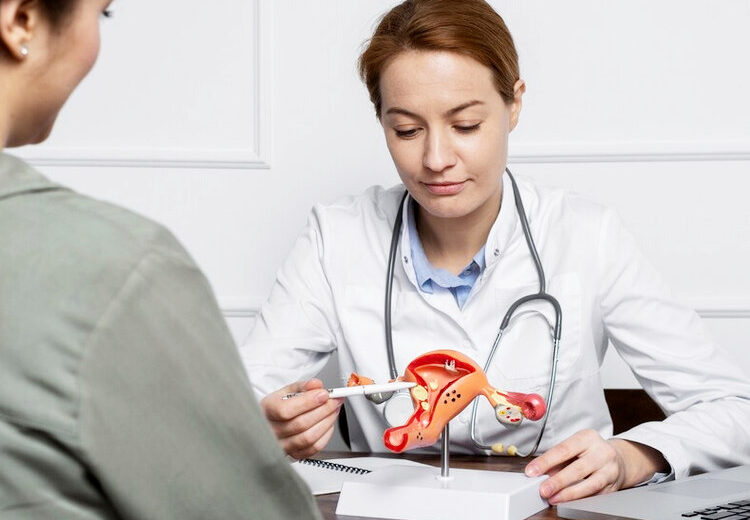
Approximately 190 million females of reproductive age are affected by endometriosis globally. Until recently, these women have suffered invasive treatments to relieve their symptoms. New advances in research have shown stem cells as a possible treatment for endometriosis.
What is Endometriosis?
Table of Contents
Endometriosis affects females starting at menstruation through menopause. Tissue comparable to your uterine lining spread outside your uterus. The tissue then affects your pelvic lining, ovaries, and fallopian tubes. Generally, this tissue affects only your pelvic area.
Call now to speak to a Stem Cell Specialist
Unlike uterine tissue, these tissues are not shed as you menstruate. As they grow, the fibrous bands of tissue become irritated and painful. They also form adhesions (bands of scar tissue that stick to other organs), resulting in your organs adhering to each other and pelvic tissue.
Symptoms of Endometriosis
While there are some girls and women who never have pelvic pain, the most prominent symptom is pain that worsens with menstruation.
The pain is not limited to menstruation. It also causes painful intercourse, with continued pain following sex, pain when urinating, and having a bowel movement, mostly before and during your period. Menstrual cramps are more painful during this time as well.
Many females suffer from stomach and lower back pain. Excessive bleeding is common, and some females have bleeding between periods. Many women complain of nausea, bloating, constipation or diarrhea, and fatigue. There is no correlation between the amount of fibrous banding and the resulting pain.
The worst symptom of endometriosis is infertility. Often, women do not get diagnosed until they have trouble getting pregnant.
Because the symptoms of endometriosis mimic conditions like IBS (irritable bowel syndrome), ovarian cysts, and Pelvic Inflammatory Disease, it is often hard to diagnose.
Causes of Endometriosis
Currently, the cause of endometriosis is unknown. There are several theories for why endometriosis occurs. The top three include:
Stem Cell Theory- The differentiation (process) of the endometrial lining has a part in the development of endometriosis during menstruation, which starts with the endometrial lining regenerating.
Mulleriosis and Embryonic Origin Theory – This theory suggests that endometriosis is caused by female reproductive system abnormalities. It proposes that the Mullerian duct system (the channel that later becomes the cervix, fallopian tubes, and uterus) is responsible for endometriosis due to abnormal migration and differentiation in components of this system.
Sampson’s Theory of Retrograde Menstruation – This theory is the oldest. It suggests that the unshed endometrial cells in menstrual blood cause the tissue to implant, leading to endometriosis because the menstrual blood backs up through the fallopian tubes entering the pelvis.
Current Endometriosis Treatments
Unfortunately, there is no cure or prevention for endometriosis. Doctors currently treat the symptoms. Early diagnosis is the key to slowing down the condition’s progression. Early treatment management can help reduce longer-term symptoms and sometimes the severity of the painful symptoms.
Two things are taken into consideration when treating endometriosis: the woman’s desire to get pregnant and how painful her condition is. First-line treatments include NSAIDs (non-steroidal anti-inflammatory drugs such as naproxen and ibuprofen and painkillers.
GnRH-analogues such as hormonal medications and birth control (contraceptives) in the form of IUDs (hormonal intrauterine devices), implants, injections, patches, pills, and vaginal rings are standard treatments. Unfortunately, these may not be the best choices if you want to get pregnant.
The most invasive treatment for endometriosis is laparoscopic surgery, which uses a tiny camera and a small incision so the doctor can see the degree of your endometriosis and remove scar tissue, adhesions, and any endometrial lesions.
It is important to treat endometriosis because it causes infertility. If you are having infertility issues, your doctor will help you decide the best procedures and medication to treat your endometriosis.
Why Stem Cells Are a Good Treatment Option
At ProgenCell, we use autologous stem cells harvested from your bone marrow. Using your stem cells for endometriosis eliminates rejection of the cells and reduces any chance of receiving compromised stem cells from an anonymous donor.
Stem cells can mimic any cell in your body. Using stem cells to treat endometriosis helps your cells reset and rejuvenate. As the stem cells grow, they replace the endometrial cells, allowing your endometrium to heal. Implantation is then possible, and fertility may be restored. Stem cells are especially helpful for women who do not respond well to progesterone, a hormone your body produces to stimulate your uterus in preparation for pregnancy.
ProgenCell is located in New City Plaza, a medical building housing various medical specialties. Our doctors specialize in stem cell treatments for metabolic, immunological, and neurological conditions, such as stem cell therapy for knees, stem cells for kidney disease, stem cell therapy for autism, stem cell treatment for diabetes, stem cell therapy for Alzheimer’s and more.
Our bilingual staff will help you set up appointments and complete needed paperwork. We also offer border-to-facility transfers. We provide cutting-edge stem cell therapies at a lower cost to our patients.
For a virtual consultation or to start your evaluation form, contact us today!











Facebook Comments